Frequently Asked Questions FAQ
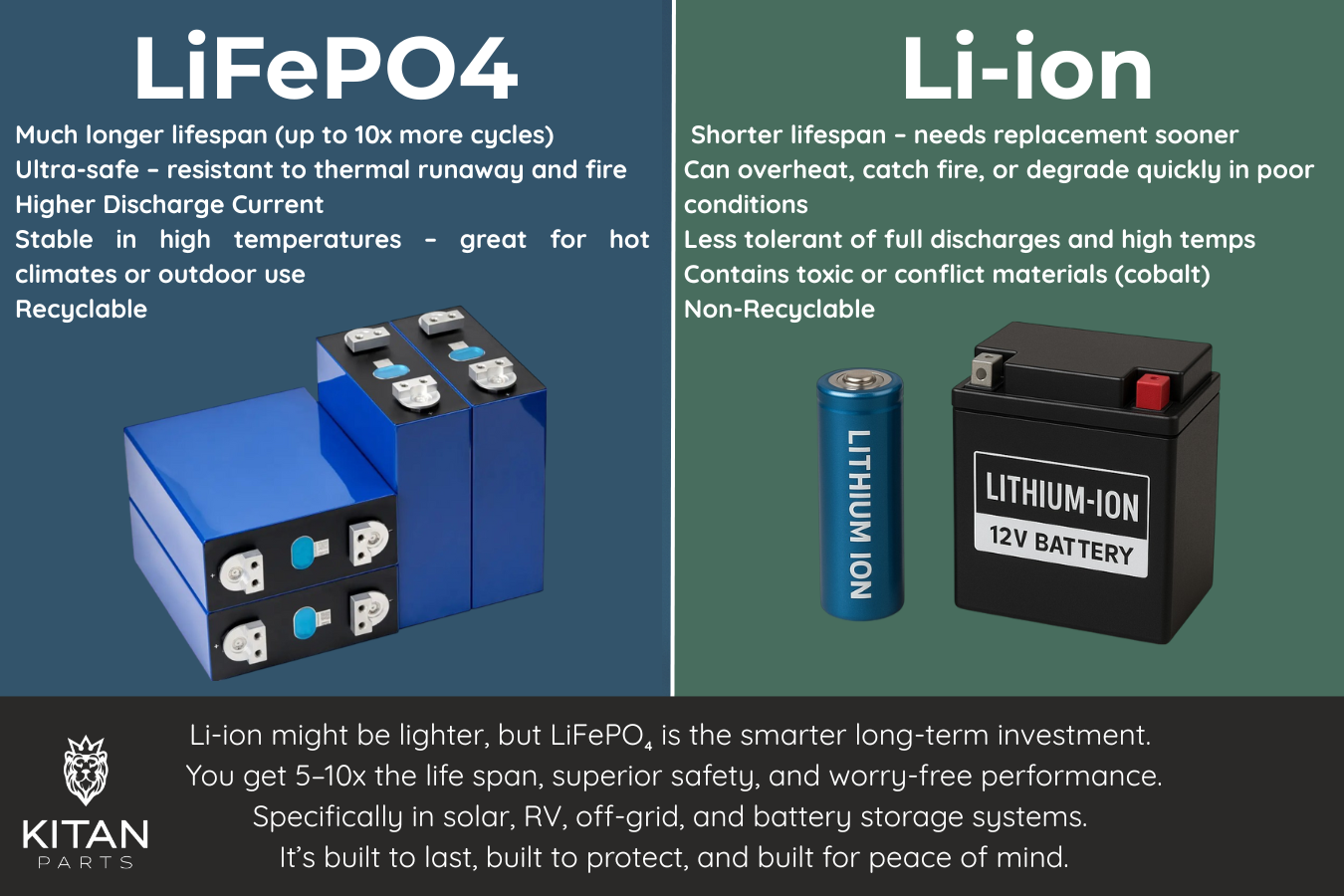
What is the difference between Lithium based batteries?
🔋 LiFePO₄ vs. Lithium-Ion (Li-ion) — Built for Different Purposes.
LiFePO₄ (Lithium Iron Phosphate) and Lithium-Ion (Li-ion) batteries are built for different purposes — and choosing the right one depends on your energy storage needs.
When it comes to safety, longevity, and reliability, LiFePO₄ stands out as the preferred choice for home energy systems, RVs, off-grid setups, and boats
Usable Capacity – Both chemistries offer high usable energy, but LiFePO₄ supports deeper discharges with less long-term degradation
Safety – LiFePO₄ is thermally and chemically stable, with a significantly lower risk of fire or thermal runaway — making it ideal for residential and mobile applications
Lifespan – LiFePO₄: 6,000–8,000+ cycles. Li-ion: 1,000–2,000 cycles.
That’s up to 4x longer life from a LiFePO₄ system.
Temperature Stability – Performs better under heat and environmental stress — ideal for Australia’s climate ☀️
Better Long-Term Value
Why Choose LiFePO₄?
✅ More charge cycles
✅ Safer and more stable chemistry
✅ Lower cost over time
✅ Excellent for stationary and mobile storage
✅ Peace of mind for homes, RVs, boats, and off-grid systems
Choose LiFePO₄ for dependable, long-term power storage —
built for real-world use, not just lab specs.
KitanParts Solar Division — Supplying the energy systems Australians trust
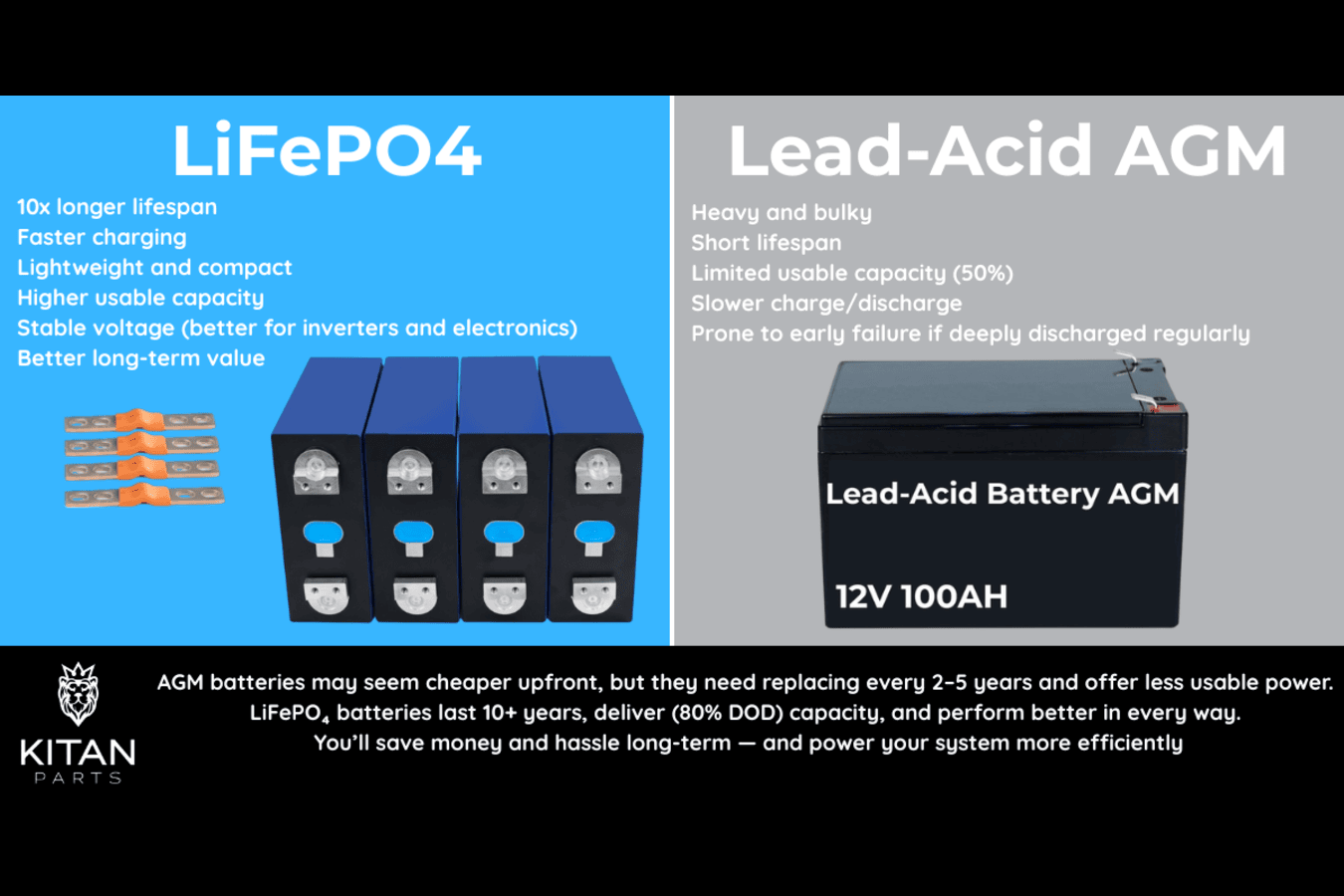
Lead Acid AGM Vs LiFePO4
Lead Acid AGM vs. LiFePO₄ — No Contest.
When it comes to performance, reliability, and long-term value, LiFePO₄ outshines traditional AGM (Absorbent Glass Mat) batteries in every category
If you're serious about powering your home, RV, boat, or off-grid setup, the difference is clear.
🔋 Key Comparisons:
Usable Capacity: LiFePO₄ delivers up to 80% usable energy — compared to 50–60% for AGM
Depth of Discharge: LiFePO₄ can be safely discharged deeper without damaging the battery
Lifespan: LiFePO₄: 6,000–8,000+ cycles; AGM: 500–1,000 cycles.
That’s up to 8–10x longer life for LiFePO₄ systems
Voltage Stability: LiFePO₄ maintains consistent voltage output — ideal for inverters and sensitive electronics
💰 True Value for Money 💰
LiFePO₄ batteries offer up to 10x better value per usable kilowatt-hour
AGM systems not only wear out faster — they:
- Waste energy due to inefficiency
- Require solar oversizing by 30% or more
- Incur hidden maintenance and replacement costs
✅ Why More Australians Are Choosing LiFePO₄:
🔹 Save upfront & long-term
🔹 More usable power — every day
🔹 Compact, lightweight, and low-maintenance
🔹 Ideal for modern energy systems: homes, caravans, boats & more
Make the smart switch. Choose LiFePO₄.Power that performs. Value that lasts
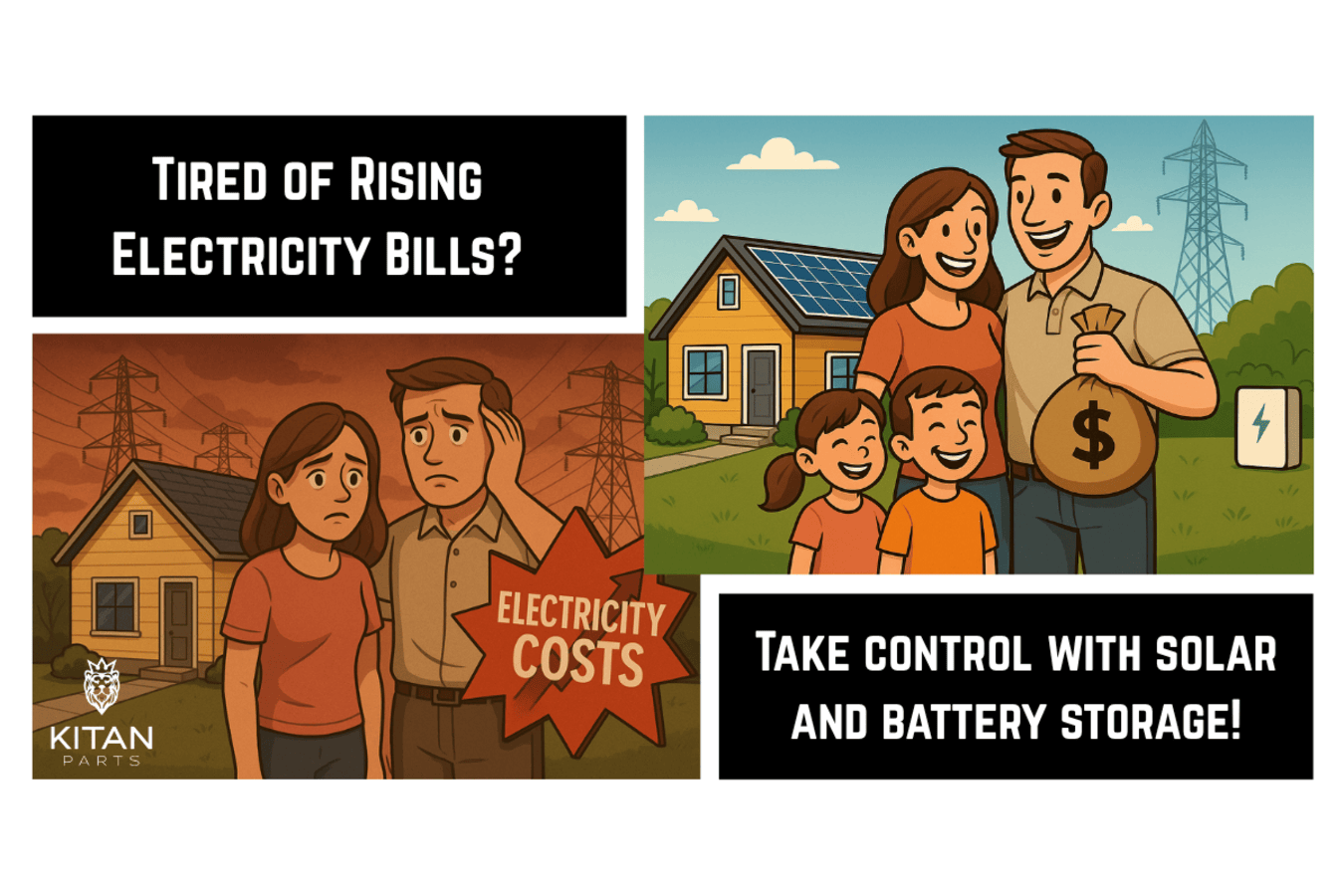
Rising Electricity Costs
⚠️ Electricity Prices Are Rising — But Yours Don’t Have To ⚠️
Across Australia, electricity costs are predicted to keep climbing — with some states facing 20–30% increases per kWh over the next few years.
That means higher bills, less certainty, and more money out of your pocket every month
But There’s a Smarter Way☀️🔋
With a solar + battery system, you can:
✅ Generate your own power for free
✅ Store it for night-time use or blackouts
✅ Avoid peak pricing and unstable tariffs
✅ Slash or eliminate your electricity bills
Invest once. Save for decades.
A solar + battery setup doesn’t just power your home — it pays for itself, then keeps paying you back with every rising energy bill
Make the switch.
Keep your savings.
Gain energy independence.
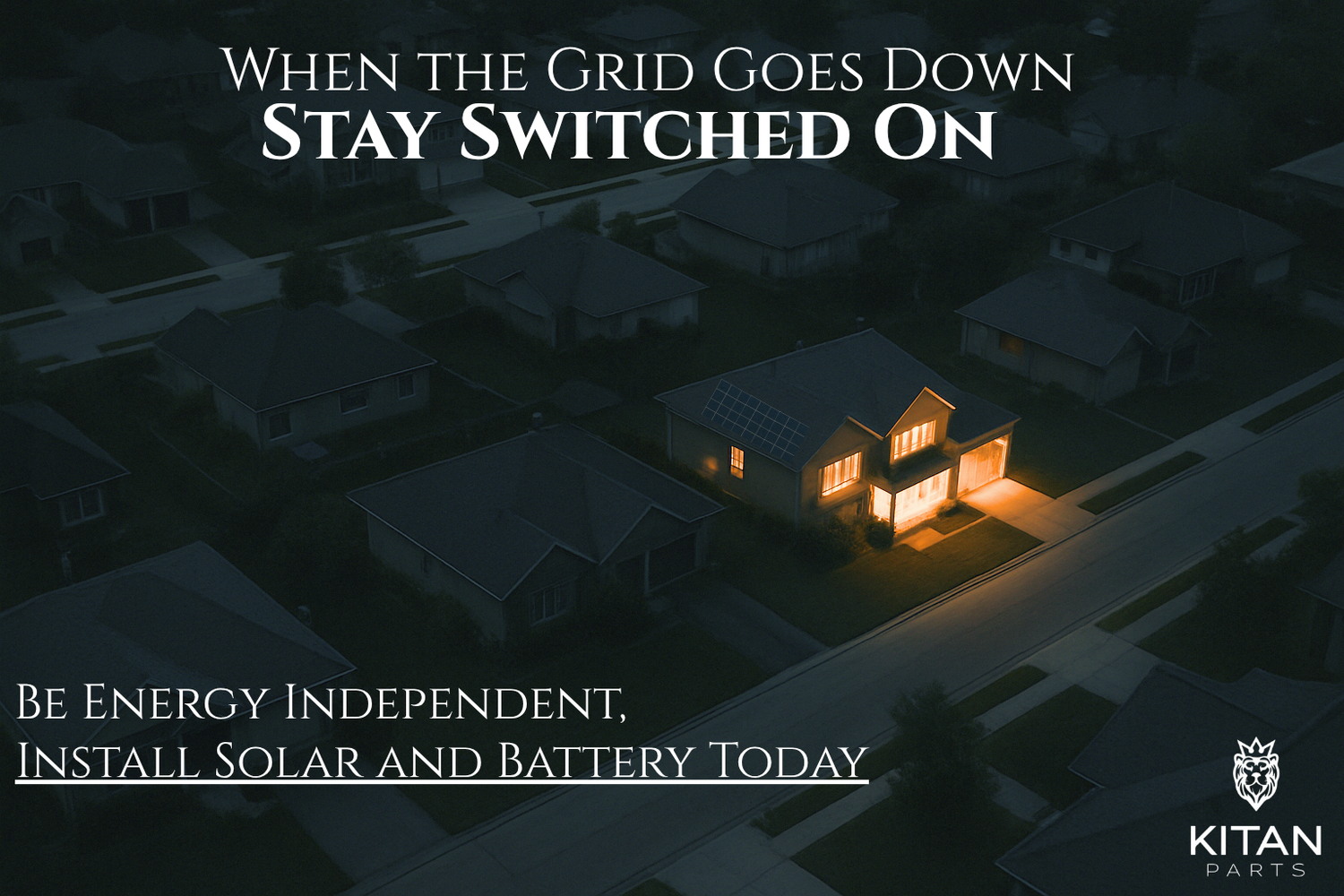
Don’t get caught in the surge — switch to solar + battery today and future-proof your energy.

Can it be used in Caravans?
For those who demand safety, reliability, and performance on the road, LiFePO₄ (Lithium Iron Phosphate) batteries are the superior choice for powering caravans, campervans, and RV setups 🌄🔋
Unmatched Safety: Engineered for thermal and chemical stability, LiFePO₄ batteries offer exceptional safety with minimal risk of overheating or fire — perfect for mobile and remote environments
High Usable Capacity: Unlike lead-acid batteries, LiFePO₄ lets you safely use up to 100% of its rated capacity — delivering longer-lasting, consistent power for fridges, lighting, water pumps, and more
Lightweight & Space-Saving: LiFePO₄ batteries are up to 50% lighter than traditional batteries, helping you reduce payload and save valuable space — without sacrificing performance
Fast Charging & Extended Lifespan:
Recharge quickly and enjoy 6,000–8,000 cycles — that’s years of dependable power for all your adventures, with minimal maintenance
Upgrade to LiFePO₄ and Enjoy True Off-Grid Freedom
✅ Go further
✅ Stay longer
✅ Camp smarter
KitanParts Solar Division — Powering your journey, wherever the road takes you.
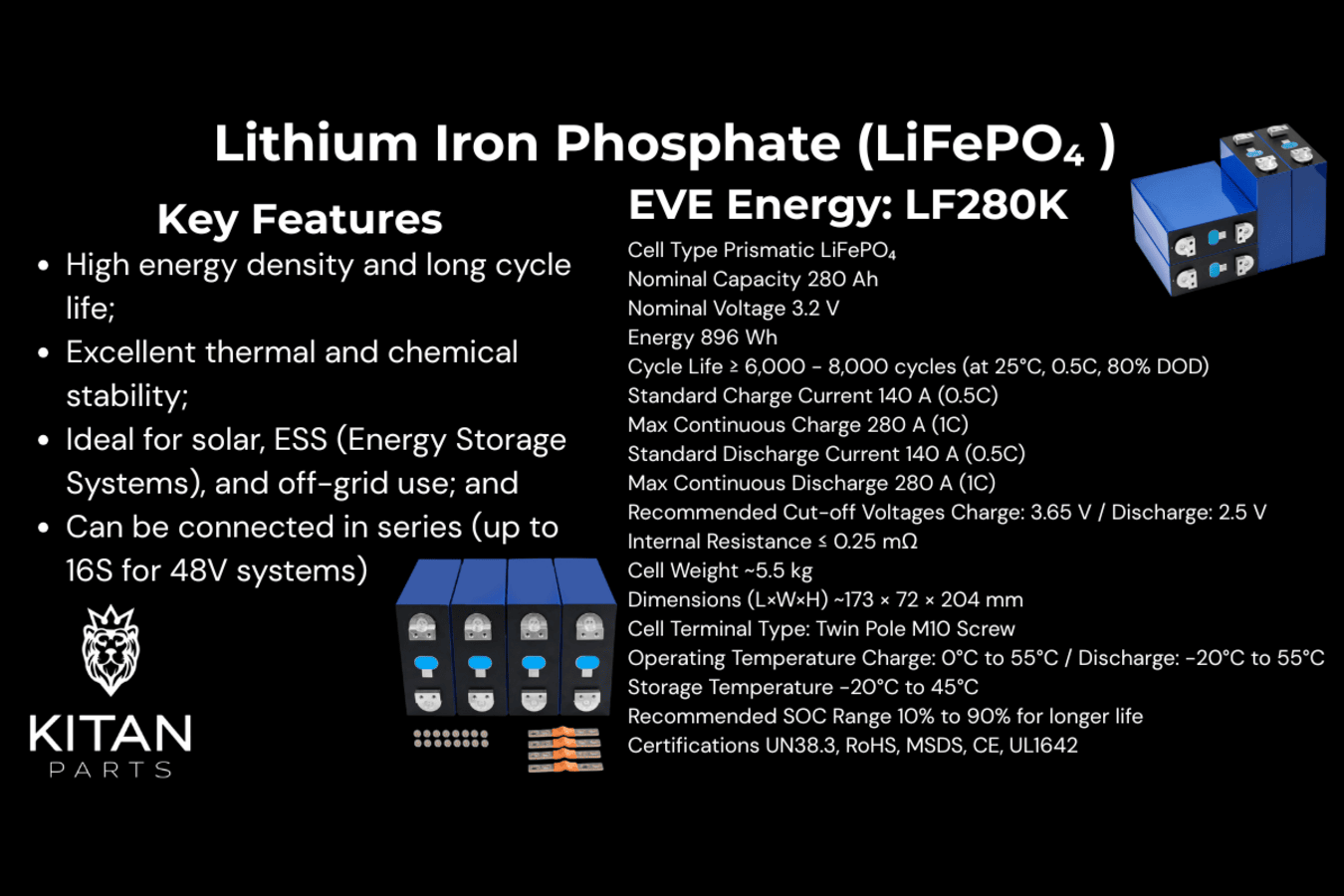
Warranty Conditions
LiFePO₄ cells, are powerful energy storage devices.
Improper installation or use may pose fire, safety, or performance risks. To ensure safe and optimal operation, please adhere to the following safety guidelines:
Installation & Usage Requirements
- Always use a Battery Management System (BMS) when connecting cells in series.
- Verify all BMS settings are correctly configured before commissioning the battery bank.
- Secure all cells properly, especially in mobile applications, to prevent movement, vibration, or abrasion.
- Never fasten or mount cells using conductive or flammable materials.
- Ensure all terminals, bus bars, and wiring connections are clean, secure, and insulated to prevent short circuits.
- Use cabling and terminals rated appropriately for the voltage and current of your system.
Charging & Discharging Guidelines
- Never overcharge cells beyond 3.65V per cell.
- Avoid discharging below 20% State of Charge (SOC).
- Use a staged lithium-compatible charger specifically designed for LiFePO₄ chemistry.
- Do not charge or operate cells in environments where the temperature is below 0°C.
Handling & Storage
- Do not use any cell that shows visible damage, corrosion, or deterioration.
- If a cell arrives damaged, contact us immediately before use — failure to do so will void the warranty.
- Store cells at approximately 30% SOC and always disconnect them when not in use.
- Top-balance cells prior to series connection to ensure uniform State of Charge across all cells.
Recommended Best Practices
- Use an active balancer alongside your BMS for optimal cell health and performance.
- When connecting in parallel, always use a parallel module — failure to do so will void your warranty.
- Installation and assembly should be performed by a qualified or trained professional appropriate to your intended application.
Policy Disclosure Statement
- By purchasing and using these products, you acknowledge and agree to follow all recommended safety practices. Failure to comply may result in damage, safety hazards, and voiding of warranty.

Australian Standards and Safety Information.
Below is a list of all relevant Australian Standards and Safety Information for final connections for your Licensed Electrician to comply with.
Core Standards
Free viewing: https://readerroom.standards.org.au/
- AS/NZS 5139: Electrical installations – Safety of battery systems for use with power conversion equipment
- AS/NZS 3000: Electrical installations (Australian/New Zealand Wiring Rules)
Additional Applicable Standards
- AS 1319: Safety signs for the occupational environment
- AS 1530.4: Fire resistance tests on building materials and construction elements
- AS 3011.2: Secondary batteries installed in buildings – Sealed cells
- AS/NZS 4509.1: Stand-alone power systems – Installation
- AS 4086.2: Secondary batteries for stand-alone systems – Installation and maintenance
- AS/NZS 5033: Installation and safety requirements for photovoltaic (PV) arrays
- AS/NZS 4777.1: Grid connection of energy systems via inverters – Installation
- AS/NZS 4777.2: Grid connection of energy systems via inverters – Inverter requirements
- AS 62040.1.1: UPS systems – General safety for operator access areas
- AS 62040.1.2: UPS systems – General safety for restricted access locations
- AS/NZS 60529: IP Ratings – Degrees of protection provided by enclosures
- AS/NZS 60898.2: Circuit breakers for AC and DC operation in residential and similar installations
- AS/NZS 60947.3: Low-voltage switchgear – Switches, disconnectors, and fuse-combination units
- AS/NZS 60950.1: Information technology equipment – General safety requirements
- IEC 62109-1: Safety of power converters for use in PV systems – General requirements
- IEC 62109-2: Safety of power converters for PV systems – Inverter-specific requirements
Peace of Mind Through Compliance
By adhering to these standards helps ensure your system is:
- to install and operate
- Built to last
- Passes all inspection and certification
- Qualify for insurance and warranties
For more information or questions about compliance, feel free to Contact Us via Email.
